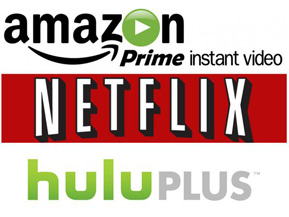|
|
Intermittent Issues: I, For One, Welcome Our New Binary OverlordsBy Ben GruchowNovember 10, 2016
It took a couple of years, but in 2011 Netflix announced its intention to pursue original programming, at a price point much more palatable than cable for users and in a format almost unprecedented for the industry: each 13-episode season of an original program would be released all at once, not only allowing binge-watching but encouraging it. If there was a single factor that pushed streaming content into the mainstream while cementing Netflix’s place in it, original programming - beginning with Season 1 of House of Cards - was that factor. Netflix is similar to Hulu in that it lacks a single set of standards with which to transmit A/V material; unlike Hulu, it fully embraces the upper limits of the H.26x standard. Rather than going between one SD and one HD resolution, and risking buffering of its most popular content, Netflix’s material runs a gamut from 320x240 right up to 1920x1080, via layering. Bitrate is selected through a truly clever algorithm that basically runs dozens of transcoding efforts on each title in their library, adjusting compression levels in minute increments until it arrives at the best tradeoff between quality and bitrate. Netflix also embraced HEVC once it was feasible to do so, which - as we well know by now - makes it possible to roughly halve the bitrate of a 1080p image without a perceptible loss in quality. The end result of this is an audiovisual experience that’s still dependent on bandwidth and thus not entirely consistent; it is not unusual for content on Netflix to occasionally fluctuate between high and low levels of quality and resolution in mid-watch. When the bandwidth is there and the coding algorithm is able to stretch its legs, though, it’s impressive.
[ View other columns by Ben Gruchow ]
[ View other Intermittent Issues columns ]
[ Email this column ]
|

|
|
|

|
Friday, November 1, 2024
© 2024 Box Office Prophets, a division of One Of Us, Inc.


